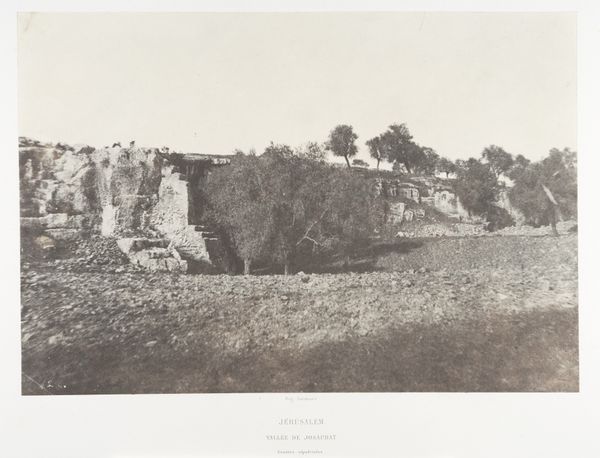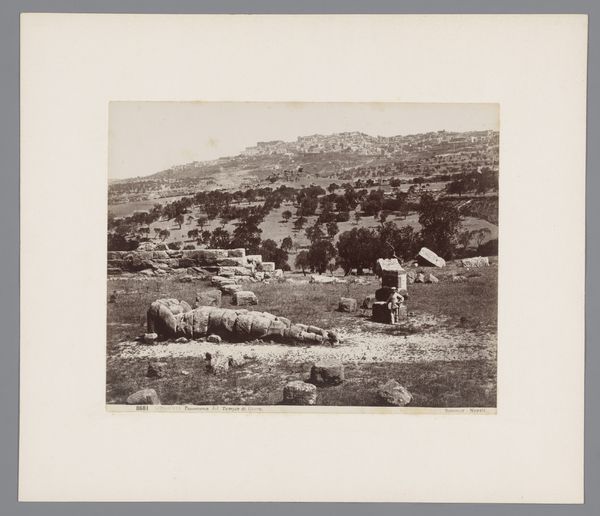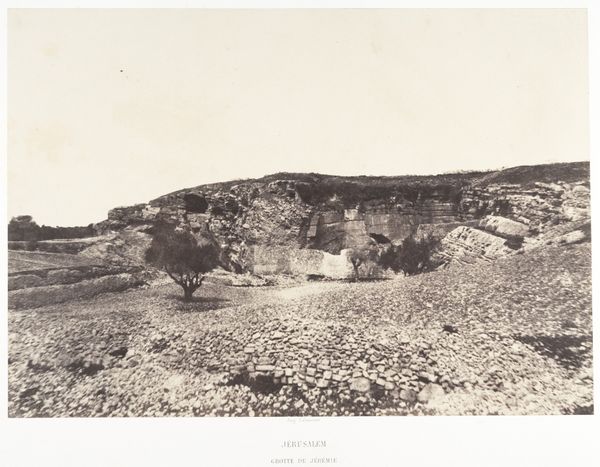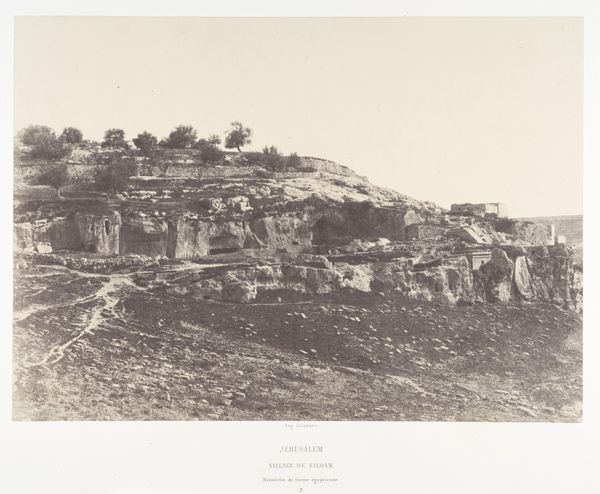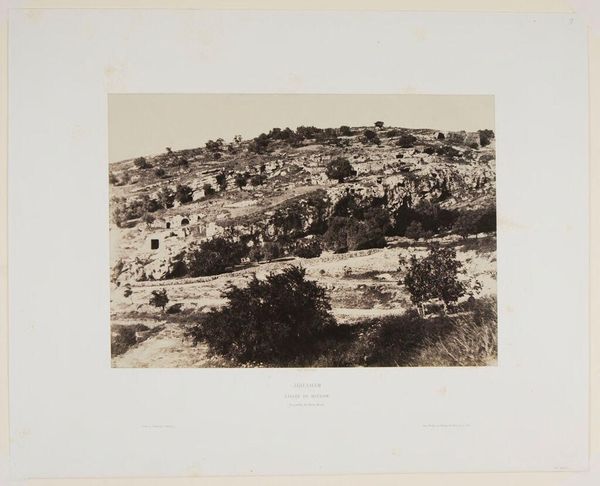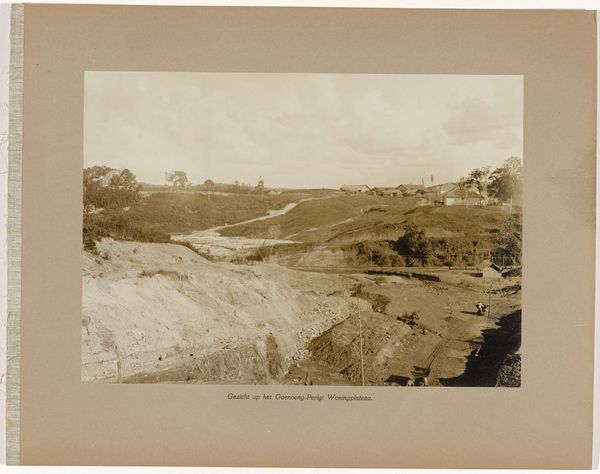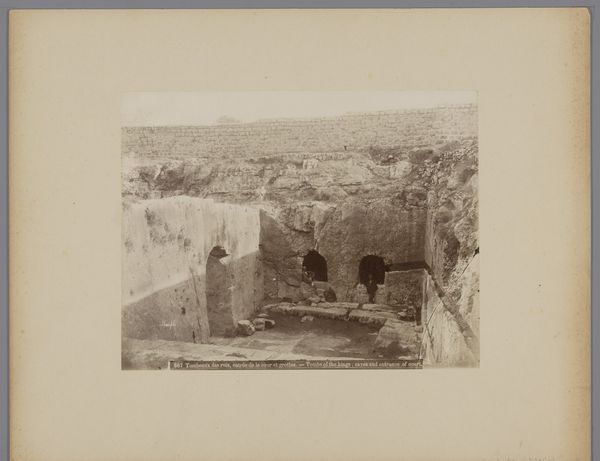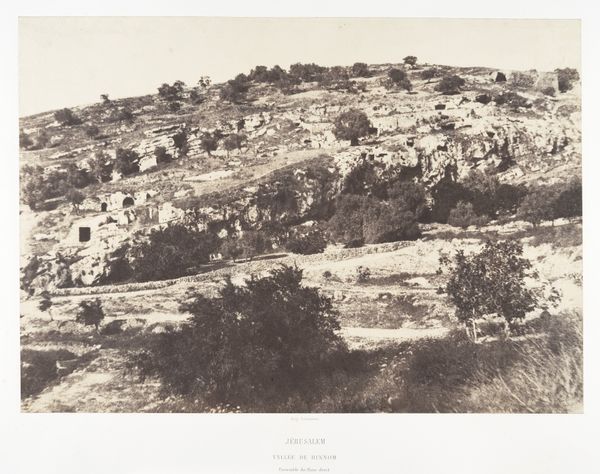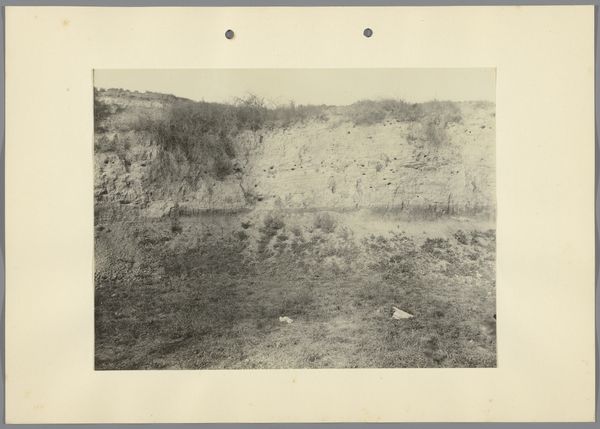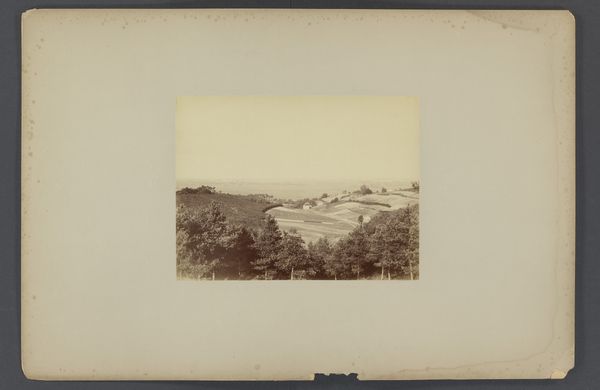
Gezicht op de ruïnes van een amfitheater in Syracuse, Sicilië 1857 - 1914
0:00
0:00
giorgiosommer
Rijksmuseum
photography, site-specific, gelatin-silver-print
#
landscape
#
photography
#
ancient-mediterranean
#
site-specific
#
gelatin-silver-print
Dimensions: height 308 mm, width 385 mm
Copyright: Rijks Museum: Open Domain
Editor: This gelatin silver print from Giorgio Sommer, created between 1857 and 1914, captures the ruins of an amphitheater in Syracuse, Sicily. It’s haunting, in a way, to see such an ancient place standing, but also so clearly crumbling. What strikes you when you look at this image? Curator: What I find compelling is how photography itself becomes a tool in shaping our perception of the past. Sommer isn’t just documenting the ruins; he's participating in the nineteenth-century project of defining and preserving cultural heritage. Consider who is viewing this photograph, and what kind of understanding they take away of ancient Sicilian culture through this photographic representation. Editor: So you are saying this image isn't really objective, it's been shaped by cultural expectations and...the tourist industry? Curator: Precisely! Images like these catered to a growing interest in archaeological sites. Sommer’s photograph makes the site appear romantic, almost picturesque, inviting viewers to see Syracuse through a specific lens – one of melancholic beauty and the grandeur of a bygone era. Look at the figures within the scene; they are dwarfed by the architecture, enhancing the monumentality. Editor: That makes a lot of sense. It almost feels like I'm seeing what someone *wanted* me to see, not the full story. Like a postcard! Curator: Yes! And, consider the institutions which then collect and display such imagery and think about how certain viewpoints get elevated and valorized through these museum systems. It compels us to think critically about the power dynamics inherent in visual representations of history. Editor: It definitely gives me a new appreciation for considering the social and historical context of what I am viewing! Thank you. Curator: And for questioning whose stories are being told and preserved, and how!
Comments
No comments
Be the first to comment and join the conversation on the ultimate creative platform.
